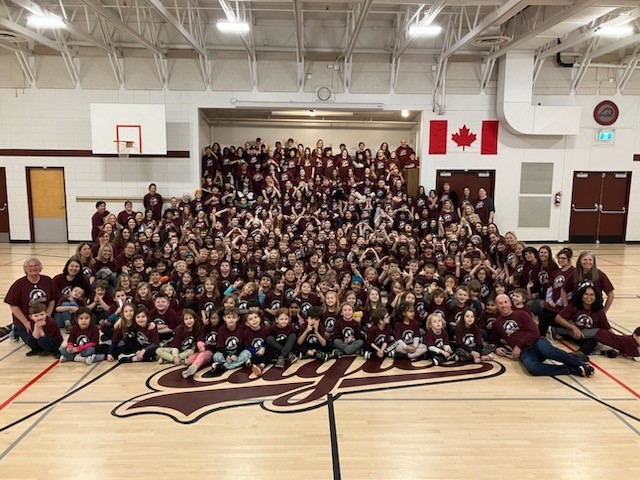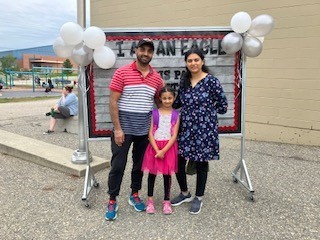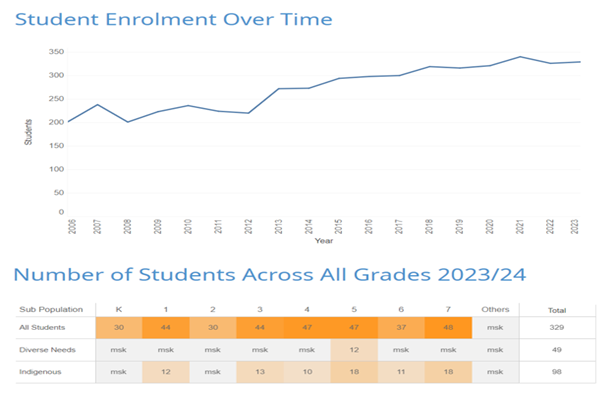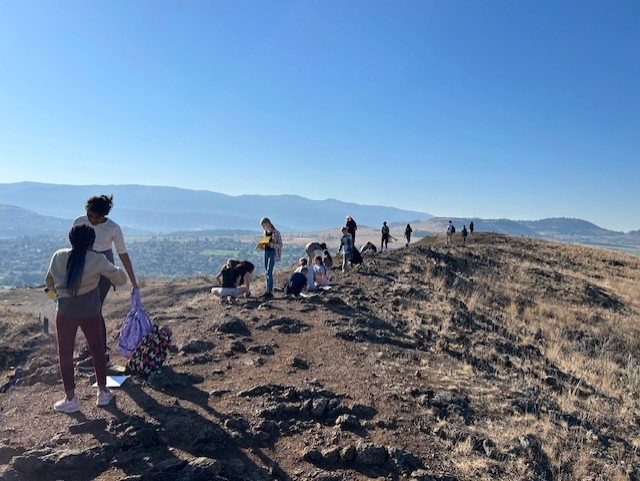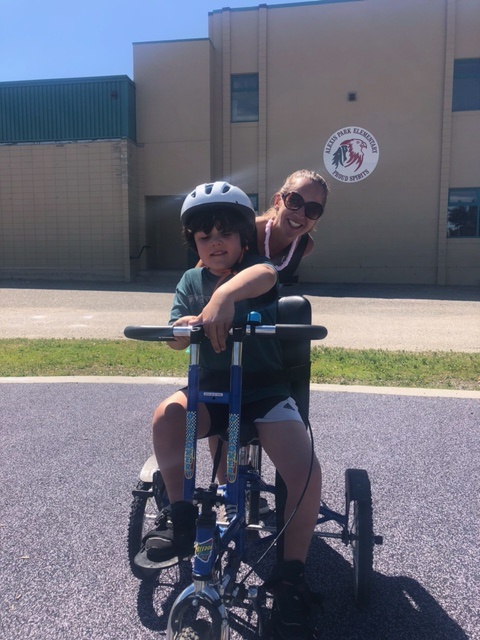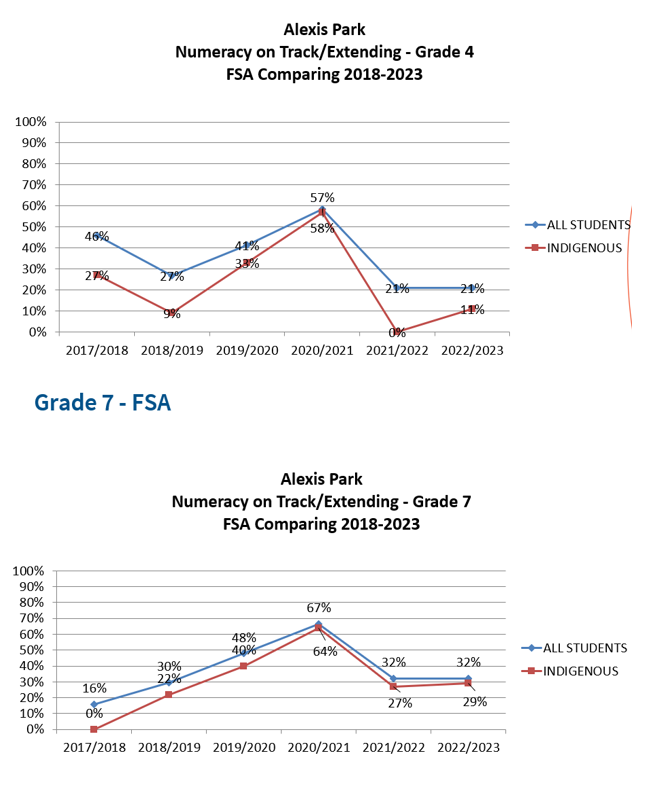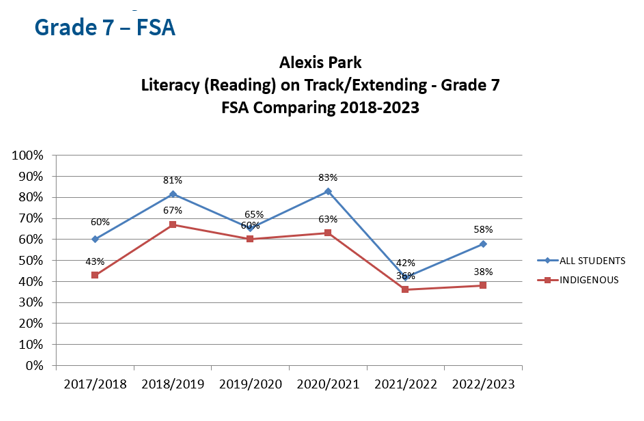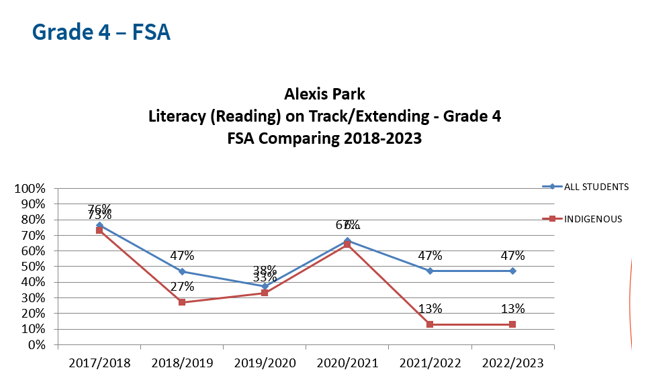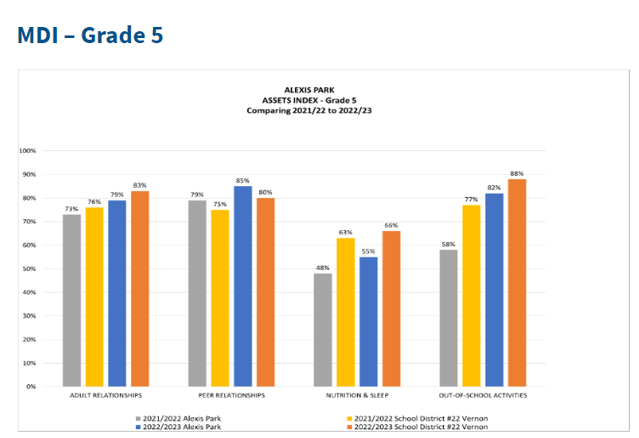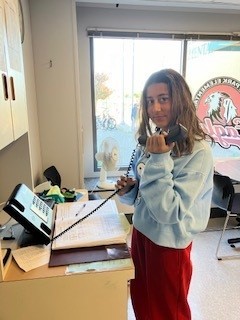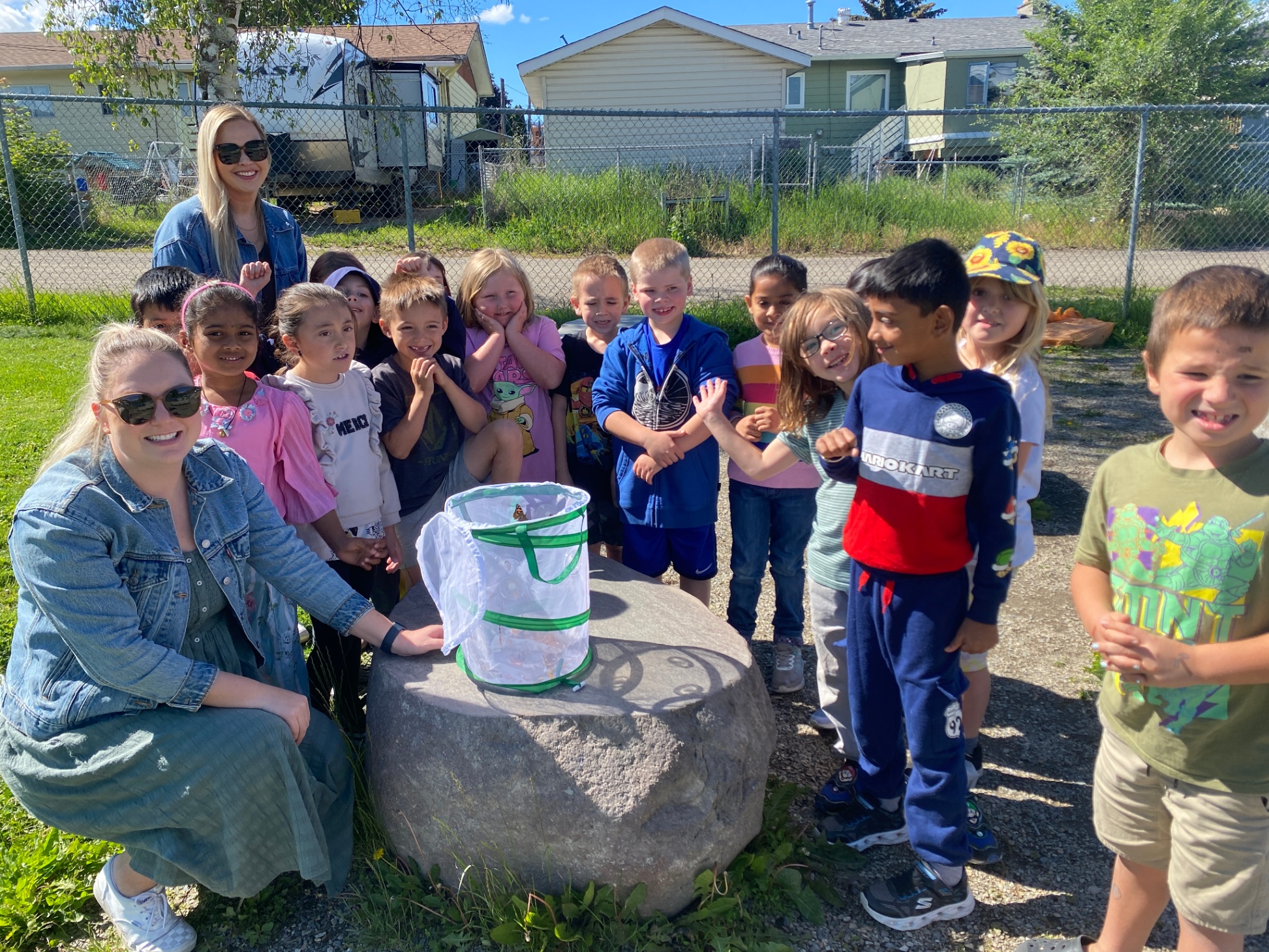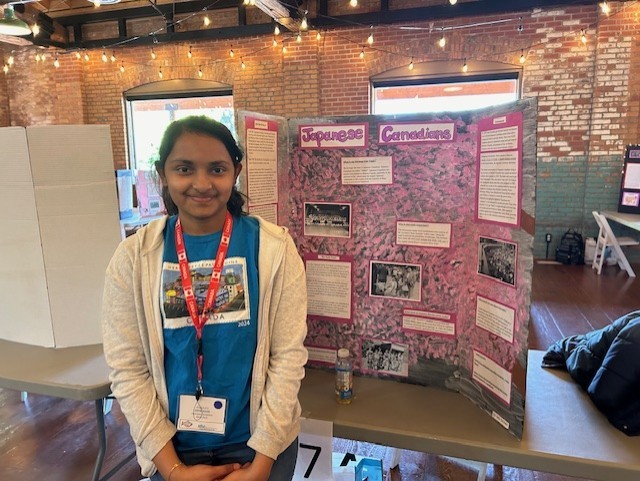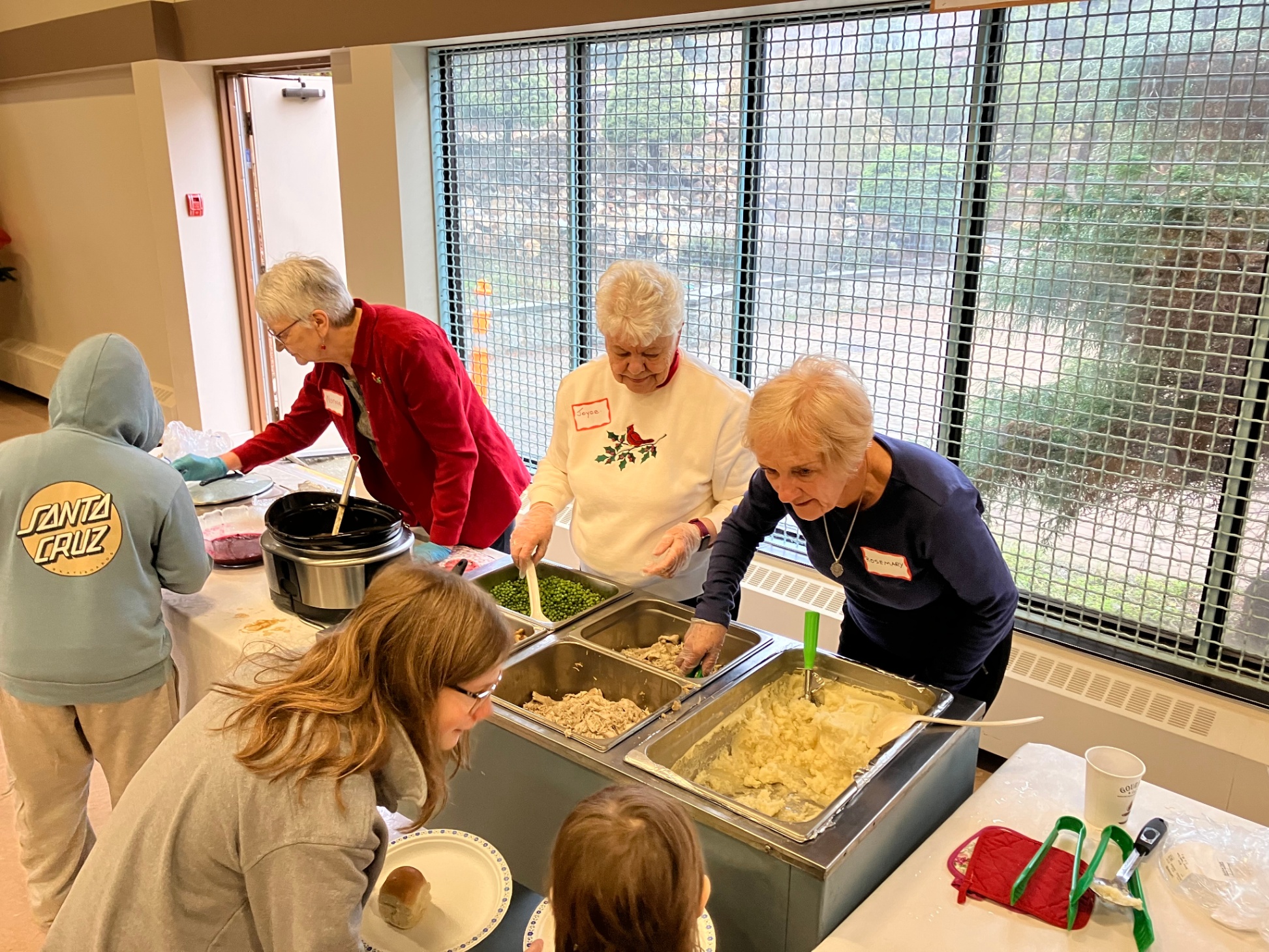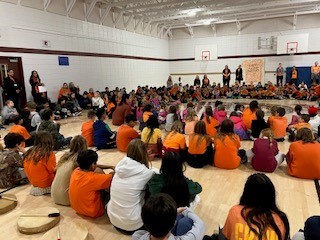Building Collective Efficacy: What process did your school take in developing your School Growth Plan?
Alexis Park Elementary School is a Kindergarten to Grade 7 school located in the heart of Vernon. With approximately 350 students, our families are diverse with many who are newcomers to Canada. We have 51 students who are considered to be English Language Learners. Our ELL population continues to be our most rapidly growing demographic, with an influx of students from India, Ukraine, Philippines, China, Korea, Nigeria, Mexico, Brazil and Ecuador. Our school is also the catchment area school for students living on the Okanagan Indian Band Reserve. We are proud to have 93 students with Indigenous ancestry, including 28 students from the Okanagan Indian Band.
Evidence-Informed: What data is driving your goal(s)?
Data was gathered from Student Learning Surveys, The Middle Years Development Instrument (MDI), Ministry assessment data and school data. Feedback from students and staff, school-based team discussions and anecdotal feedback from staff has also been considered in the creation of our school goals. Primary, Intermediate and Middle Years teams meet to identify and address learning gaps identified through the data on an ongoing basis.
Student Success
keyboard_arrow_downStudent Success To provide many pathways for all students to pursue and achieve desired outcomes.
Strategic Plan Goal(s):
District Strategic Plan
Actions: What will we do to support all learners?
1. Enhance student communication skills (oral, written and non-verbal), particularly with the increase in the number of English Language Learners in our school. Oral language development is critical to literacy development and literacy success, and provide the foundation for fluency and comprehension. 2. Increase concrete skill development in reading, writing and numeracy through the following: Early identification of students who are struggling with literacy in Kindergarten and Grade 1 and provision of Early Intervention supports. Small group and differentiated instruction to meet each student "where they're at". Prioritizing meaningful inclusion in regular classroom activities for students which complex needs. Hands-on learning through manipulatives and projects. Land-based learning, recognizing that learning takes time, patience and connection to the world. Ensure that teachers are using effective instructional practices and current resources (i.e. Adrienne Gear writing strategies, Mathology, Epic Books, UFLI, Heggerty). Student and Classroom Profile data (i.e. Numeracy Screeners, FSAs, Early Learning Profiles, PM Benchmarks) is regularly utilized so that teachers can plan instruction based on the learning needs of their students.
Reflections & Results:
We are working on continuous improvement through regular reviews of our student data, working collaboratively as a staff, and building capacity through ongoing professional learning.
Next Steps:
LITERACY Reading: FSA data and PM Benchmark data indicates that our students struggle to proficiently in reading. Priorities for our students include: • Increase phonemic awareness and phonological skills at the K-3 level through explicit instruction (UFLI Program). • Support struggling readers in Grades 4-7 through targeted direct instruction that differentiates for student needs • Increase reading fluency and comprehension from K-7. Key strategies that we will employ include: • Implementation of the UFLI Program in K-3 classrooms. • Early literacy intervention: collaboration between SBRT, discretionary teacher and teacher librarian to support students who are demonstrating “emerging” proficiency in K-2 classes. • Literacy “internships” with district literacy helping teachers supporting UFLI in primary classrooms. • Indigenous Literacy Intervention Teacher to provide explicit instruction for Gr. 4-7 students who are not yet reading at grade level. • Use of discretionary staffing (.4 FTE) to enhance classroom teacher’s capacity to effectively develop reading skills in their students. • Reading Eggs program (software) to supplement classroom instruction, for extra practice at home and in school. Writing: FSA data indicates that our students struggle to express themselves proficiently in writing. As writers, our students struggle to stay on topic, organize their thinking, and include evidence to support their thinking/ideas. Priorities for our students include: • being able to participate more actively in their learning by accessing, co-creating and applying success criteria to their writing with greater independence, in order to move beyond minimally meeting expectations. • Staying on topic during writing tasks. • Giving opinions and expressing ideas/thoughts using evidence from text or experience to support their ideas/thoughts. • Making connections (text to self, text to text, text to world) in their written responses • Utilize templates to organize their thinking. • Access writing exemplars throughout the year to compare personal writing and reflect on/identify next steps. • Receiving feedback (teacher, peer) and implement feedback based on success criteria. Key strategies that we will employ include: • Create and co-create success criteria and build in opportunities for students to refer to it before, during and after writing opportunities. • Access Adrienne Gear resources across all grade levels to create consistency. • Utilize optimal learning strategies (i.e. Regie Routman “I do, we do, you do.” (gradual release of responsibility). • Use common assessment and performance standards for class wide writing activities to assess the use of evidence, details and organization. • Participate in opportunities for professional growth and collaboration. • Provide cross curricular writing opportunities. • Ensure there is at least 120 minutes per day devoted to Literacy activities across curricular areas. NUMERACY Grade 4 and 7 FSA data indicates that our students struggle in all areas of Numeracy. Priorities for our students include understanding critical concepts, basic number sense and number flexibility, as well as problem-solving. We have noticed that our students also struggle with going beyond the acquisition of basic skills and solving simple math problems to being able to acquire, create, connect, understand and communicate in the language of “math”. Key strategies we will employ include: • Utilize consistent math language in order to help students make connections from one year to the next. • Incorporate school wide math focus or routines into our school culture. • Utilize a common math resource across Grades K-7 (i.e. Mathology) • Continued focus on identifying and mastering critical concepts for each grade level. • Consistently administer the Numeracy Screener and utilize the data for formative assessment to guide next steps in teaching. • Incorporate problem-solving into daily classroom routines (increase opportunities for students to identify and solve real-world math problems). • Ensure there is a minimum of 50 minutes of math instruction each day. • Accessing District Learning Coordinators to enhance teachers’ capacity to develop numeracy skills using the most current, effective instructional practices • Utilize data in EdPlan Insight to plan instruction based on class profiles. INCREASING STUDENT ENGAGEMENT AND BUILDING POSITIVE CONNECTIONS TO SCHOOL: Feeling welcome and safe at school is a foundational part of student success and wellbeing. Our data indicates that we have a significantly lower percentage of our students who are thriving as compared to the rest of the district (school = 18% vs. district = 34%). Our students also have a lower assets index as compared to other students in the district, although interestingly, our students rate higher than the district average with regards to peer relationships. Key strategies we will employ to increase student engagement include: • Daily breakfast program • Welcome Room – ISWs and IOW to connect and support Indigenous students • School Spirit Days (to build community) • SBRTs supporting students (i.e. soft starts, breaks, etc.) through the Learning Center • Purchase of school spirit wear • Identification of Indigenous students and ensuring that every student has at least two positive adult connections at school • Increase the use of the library at lunch (i.e. teachers offer lunch clubs for different activities throughout the year). • 2x5 strategy (teachers choose two vulnerable students to “adopt” and build a positive connection with – have a meaningful 5 minute conversation a few times per week. • “Focus of the Week” (or month) • “It takes a village” concept - we all work together to find creative ways to support students, all staff reinforce common expectations for all students. ATTENDANCE: One of the key areas of concern continues to be a comparatively high rate of absenteeism with our students, particularly Indigenous students. As of December 2023, our attendance data indicates that 40 (11.76%) out of 340 students (16/40 are Indigenous students) have missed 20 or more days of school, and 63 (18.53%) students (20/63 are Indigenous) have missed 12-19 days of school. There is a clear link between regular school attendance and academic success. It is essential that we work in partnership with OKIB and parents to increase consistent school attendance. Based on our attendance data, we have developed a tiered model of intervention to increase consistency of attendance. Some of the measures we have implemented to address this concern include: • Classroom teachers contacting the parents/guardians of Indigenous students and designated students when their child has an unexcused absence. • Classroom teachers contacting parents when a child has an unexcused absence for more than two days. • School principal and/or vice-principal contacting families of students with higher-than-normal absenteeism to identify barriers and create a plan to increase consistency of attendance. • Attendance reviews with our Indigenous Support Teachers and the School-Based Team to understand the story for each student and their family whose attendance is in Tier 2 or Tier 3, so that we can identify and mitigate barriers to consistent school attendance. • Working with OKIB to help mitigate barriers to consistent school attendance for students who are members of the band. • Working with our Transportation Department to help mitigate transportation challenges that are barriers to consistent school attendance. • Welcoming students whenever/however they arrive; don’t burden students with tons of “catch up” work, only the essential concepts. • Formative assessment practices that allow students flexibility in how they demonstrate what they have learned.
Leadership Excellence
keyboard_arrow_downTo empower all staff to contribute to organizational excellence in the service of student success.
Strategic Plan Goal(s):
District Strategic Plan
Actions: What will we do to support all learners?
1. Engaging in district professional learning opportunities. • UFLI (Primary team). All of our Primary teachers are supporting literacy in our Early Years with a consistent resource, strategies and language. • Lunch ‘n Learn sessions to improve classroom instruction in Literacy and familiarity with the UFLI program • Literacy and Numeracy “residencies” with District Learning Coordinators. 2. Increasing Student Agency • Increasing student independence and ownership over their own learning. • Increasing student capacity for self-assessment and peer assessment. • Providing opportunities for students to demonstrate environmental stewardship. • Providing leadership opportunities for all students (K-7). Examples include: announcements, office monitors, lunch hour helpers in classrooms, leading assemblies.
Reflections & Results:
We continue to build on opportunties for both staff and students to demonstrate leadership in our school. Students have been leaders in our school by taking on roles such as: lunch and office monitors, composting, leading assemblies, sharing their culture, and daily announcements and participation in the District and Regional Heritage Fairs. Staff have also embraced new opportunties for professional learning such as working with curriculum lead teachers on Numeracy and Early Literacy (UFLI).
Next Steps:
We will continue to seek opportunities for our students and staff to demonstrate leadership both in our school, district and community. We will continue to utilize Student Learning Survey data as well as school-wide "street data" to help guide our next steps on this goal.
Community Connections
keyboard_arrow_downTo build strong relationships amongst all community members in the service of student success.
Strategic Plan Goal(s):
District Strategic Plan
- Commit to the Truth and Reconciliation Calls to Action.
- Commit to the BC Human Rights Code - an environment free of racism, biases, and all forms of discrimination.
- Increase collaboration between community and regional partners.
Actions: What will we do to support all learners?
• Working collaboratively with our OKIB Education Liaison to barriers to student success that are impacting Indigenous students • Supporting families to increase consistent student attendance. • Provide opportunities for anti-racism education and celebration of diversity. • Create an environment where racist language or acts are actively challenged by both staff and students. • To work collaboratively with community organizations to support the social emotional and physical needs of students in our building.
Reflections & Results:
As a school community, we are beginning our journey on the path to Truth and Reconciliation. We are committed to engaging in ongoing learning and strengthening our commitment to Truth and Reconciliation in authentic ways that move us forward together.
Next Steps:
This goal is overarching and broad; it reaches deep into the very fabric of our school community. This learning takes honesty, openness, time and the desire to move forward in a good way. We will continue to work with our community partners to increase opportunities strengthen pathways for success for all of our students.

